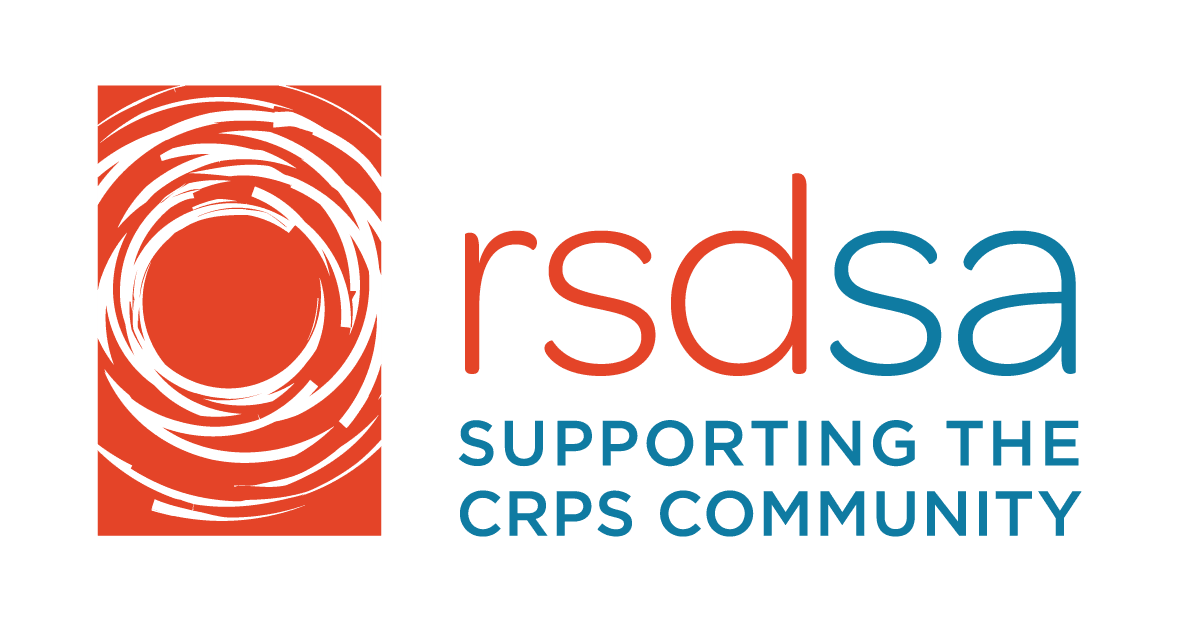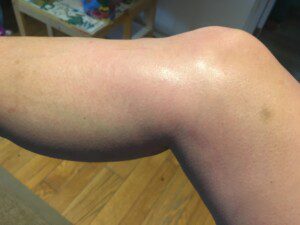Abbott is an annual sponsor of RSDSA.
Living with complex regional pain syndrome (CRPS) can bring daily challenges as individuals navigate life under the weight of persistent, severe pain. For Tony, his journey with severe pain started when he was diagnosed with rheumatoid arthritis at 19. Despite the physical toll, he built a remarkable career as a top chef at restaurants across the country.
“My attitude was always: Keep moving through [the pain],” said Tony. Yet he had numerous surgeries and fusing procedures to try and control his pain. And nothing really worked.
“After I [had fusion surgery on] my ankle in 1991, I was never really that mobile. I dragged my leg around,” Tony explained.
“If you want to be mobile, cut it off”
Tony heard this unwelcome advice from a doctor, so at age 40 he made the difficult decision to have his left leg amputated below the knee in the hopes of increasing his mobility.
For a while the amputation helped alleviate Tony’s pain. And with physical therapy, he learned how to get around on one leg, even mastering skiing. But 5 years later, he developed severe nerve pain, diagnosed as complex regional pain syndrome (CRPS). That’s when his pain specialist told him about DRG therapy.
Finding a life-changing therapy
Tony initially did a trial period with DRG therapy to see if it could provide some relief. The first day of his trial period, he felt so good that he walked 5 miles around New York City.
“It felt great,” he said. “Up to that point, I had not walked that far in about 5 or 6 years.” Tony then had a permanent DRG system implanted. And he said he’s never felt better. The majority of his nerve pain is relieved, so he’s able to hike again—and even able to go back to skiing. He’s now a ski instructor for disabled people.
“For me, it’s been a life-changing device,” Tony said of DRG therapy. I don’t give up.”
Tony hopes his story can help other people also suffering from CRPS I or Causalgia (CRPS II). “What people need to know is that if you have nerve pain, [DRG therapy] has a huge potential to change the quality of your life,” he said. “For me, it has completely changed the quality of my life.”
What is Proclaim™ DRG Therapy?
Proclaim DRG Therapy is a novel neurostimulation technology that relieves pain at the source by interrupting pain signals at the dorsal root ganglion (DRG) before they reach the spinal cord. The DRG is a cluster of sensory nerve cells that sit along the levels of the spine that researchers have shown to help modulate pain signals from areas of the body where people experience pain. 1 Differing from traditional tonic spinal cord stimulation that has been used for decades, DRG stimulation may be a better choice for those with CRPS I or causalgia of the lower extremities. 2
By focusing electrical stimulation specifically on the DRG pain signals can be interrupted so you don’t feel pain in the same way. Proclaim DRG therapy has been clinically proven to provide significant pain relief, improve physical function, and enhance quality of life. 2*
Eligible patients can trial the therapy to see if it provides meaningful pain relief before committing to a permanently implanted system. 3 To learn more about DRG therapy watch Dr. Kiran Patel’s webinar that covers the nature of pain, common pain conditions, and therapeutic options for pain relief.
ISI
This testimonial relays an account of an individual’s response to the treatment. This patient’s account is genuine, typical, and documented. However, it does not provide any indication, guide, warranty or guarantee as to the response other persons may have to the treatment. Responses to the treatment discussed can and do vary and are specific to the individual patient.
These materials are not intended to replace your doctor’s advice or information. For any questions or concerns you may have regarding the medical procedures, devices and/or your personal health, please discuss these with your physician.
*Quality of life observed in other endpoints in the ACCURATE study
1. Esposito, M., Malayil, R., Hanes, M., & Deer , T. (2019, June). Unique Characteristics of the Dorsal Root Ganglion as a Target for Neuromodulation. U.S. National Library of Medicine. https://pmc.ncbi.nlm.nih.gov/
2. Deer TR, Levy RM, Kramer J, et al. Dorsal root ganglion stimulation yielded higher treatment success rate for complex regional pain syndrome and causalgia at 3 and 12 months: a randomized comparative trial. Pain. 2017;158(4):669-681. doi:10.1097/j.pain.0000000000000814
3. Proclaim™ DRG Neurostimulation System Clinician’s Manual. Plano, TX. 2025.
Risk Information: The placement of a neurostimulation system requires surgery, which exposes patients to certain risks. Complications such as infection, swelling, bruising, and possibly the loss of strength or use in an affected limb or muscle group (e.g., paralysis) are possible. Additional risks such as undesirable changes in stimulation may occur over time. Be sure to talk to your doctor about the possible risks associated with neurostimulation.
Rx Only
Brief Summary: Prior to using Abbott devices, please review the User’s Manual for a complete listing of indications, contraindications, warnings, precautions, potential adverse events, and directions for use. The system is intended to be used with leads and associated extensions that are compatible with the system.
Indications for Use: Spinal column stimulation via epidural and intra-spinal lead access to the dorsal root ganglion as an aid in the management of moderate to severe chronic intractable* pain of the lower limbs in adult patients with Complex Regional Pain Syndrome (CRPS) types I and II.**
*Study subjects from the ACCURATE clinical study had failed to achieve adequate pain relief from at least two prior pharmacologic treatments from at least two different drug classes and continued their pharma- cologic therapy during the clinical study.
**Please note that in 1994, a consensus group of pain medicine experts gathered by the International Association for the Study of Pain (IASP) reviewed diagnostic criteria and agreed to rename reflex sympathetic dystrophy (RSD) and causalgia, as complex regional pain syndrome (CRPS) types I and II, respectively. CRPS II (causalgia) is defined as a painful condition arising from damage to a nerve. Nerve damage may result from traumatic or surgical nerve injury. Changes secondary to neuropathic pain seen in CRPS I (RSD) may be present, but are not a diagnostic requirement for CRPS II (causalgia).
Contraindications: Patients who are unable to operate the system, who are poor surgical risks. Patients who have failed to receive effective pain relief during trial stimulation.
Warnings/Precautions: Diathermy therapy, implanted cardiac systems or other active implantable devices, magnetic resonance imaging (MRI), computed tomography(CT), electrosurgery devices, ultrasonic scanning equipment, therapeutic radiation, explosive and flammable gases, theft detectors and metal screening devices, lead movement, operation of machinery, equipment and vehicles, pediatric use, pregnancy, and case damage.
Adverse Effects: Unpleasant sensations, changes in stimulation, stimulation in unwanted places, lead or implant migration, epidural hemorrhage, hematoma, infection, spinal cord compression, or paralysis from placement of a lead in the epidural space, cerebrospinal fluid leakage, tissue damage or nerve damage, paralysis, weakness, clumsiness, numbness, sensory loss, or pain below the level of the implant, pain where needle was inserted or at the electrode site or at IPG site, seroma at implant site, headache, allergic or rejection response, battery failure and/or leakage. User’s Guide must be reviewed for detailed disclosure.








